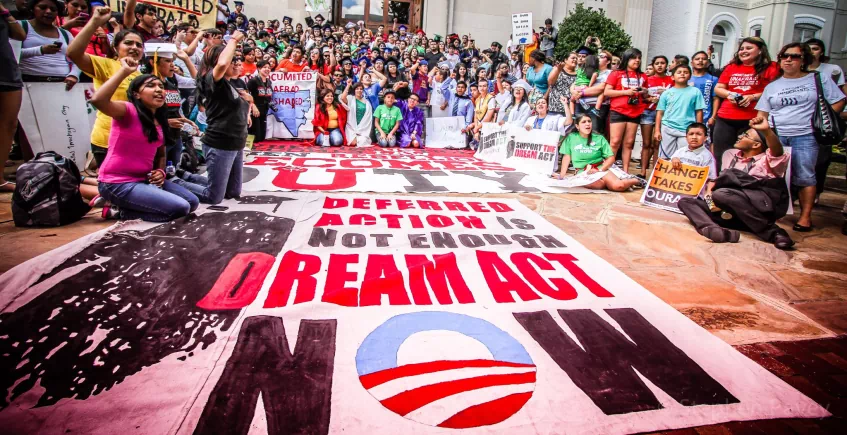
On June 15, 2012, President Obama announced that the United States would stop deportations for students eligible under the DREAM Act, which failed passage in the Senate in 2010. Under this new policy, young people who meet certain criteria similar to those of the DREAM Act will be eligible to remain in the United States for a period of two years and apply for work authorization. After the two-year period, renewal of these benefits is available.
The DREAM Act as well as the subsequent policy decision by the Obama Administration after the DREAM Act failed to pass the Senate is a controversial topic.
If the DREAM Act were to be implemented, it would likely result in a substantial influx of students into universities, specifically concentrated in state-supported schools since beneficiaries would receive in-state tuition.
Opponents to this legislation often cite the tax burden put on U.S. citizens to fund the education of illegal immigrants in public universities. Steven Camarota, Director of Research at the Center for Immigration Studies, estimates that taxpayers would pay approximately $6000 for each year an illegal immigrant attends a public university. Those in favor of this act claim that the education of illegal immigrants will eventually increase tax revenue assuming that those with a college education earn more and therefore pay more in taxes over the long term.
The issue for institutions of higher education will inevitably be more immediate. A large influx of students in a short period of time will likely cause crowding in some public universities, especially those located in areas of the country with a higher concentration of illegal immigrants. This will add to the burden of those universities already greatly affected by budget cuts. Depending on the specific increase of students, some universities will also experience an augmentation of administrative demands, especially in areas such as financial aid and admissions.
According to the Department of Homeland Security, the majority of illegal immigrants are Hispanic, and therefore, the vast majority of those who would benefit from the DREAM Act will also benefit from affirmative action programs implemented in the university system. Many of these beneficiaries will also benefit from many of the scholarships designated for minorities or underprivileged students available through universities and various outside sources.
While the idea of granting permanent legal status to young illegal immigrants raised in the United States is an act that champions a worthy cause, institutions of higher education should be aware of unintended repercussions. Universities should carefully review their budgetary affairs and prepare for possible financial burdens that sometimes come with a sudden increase in a student population.









